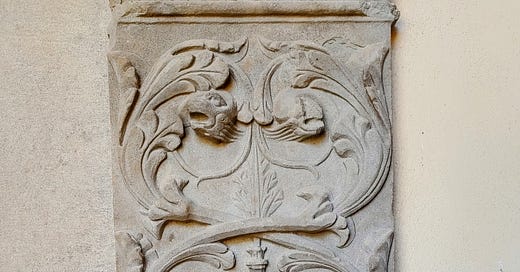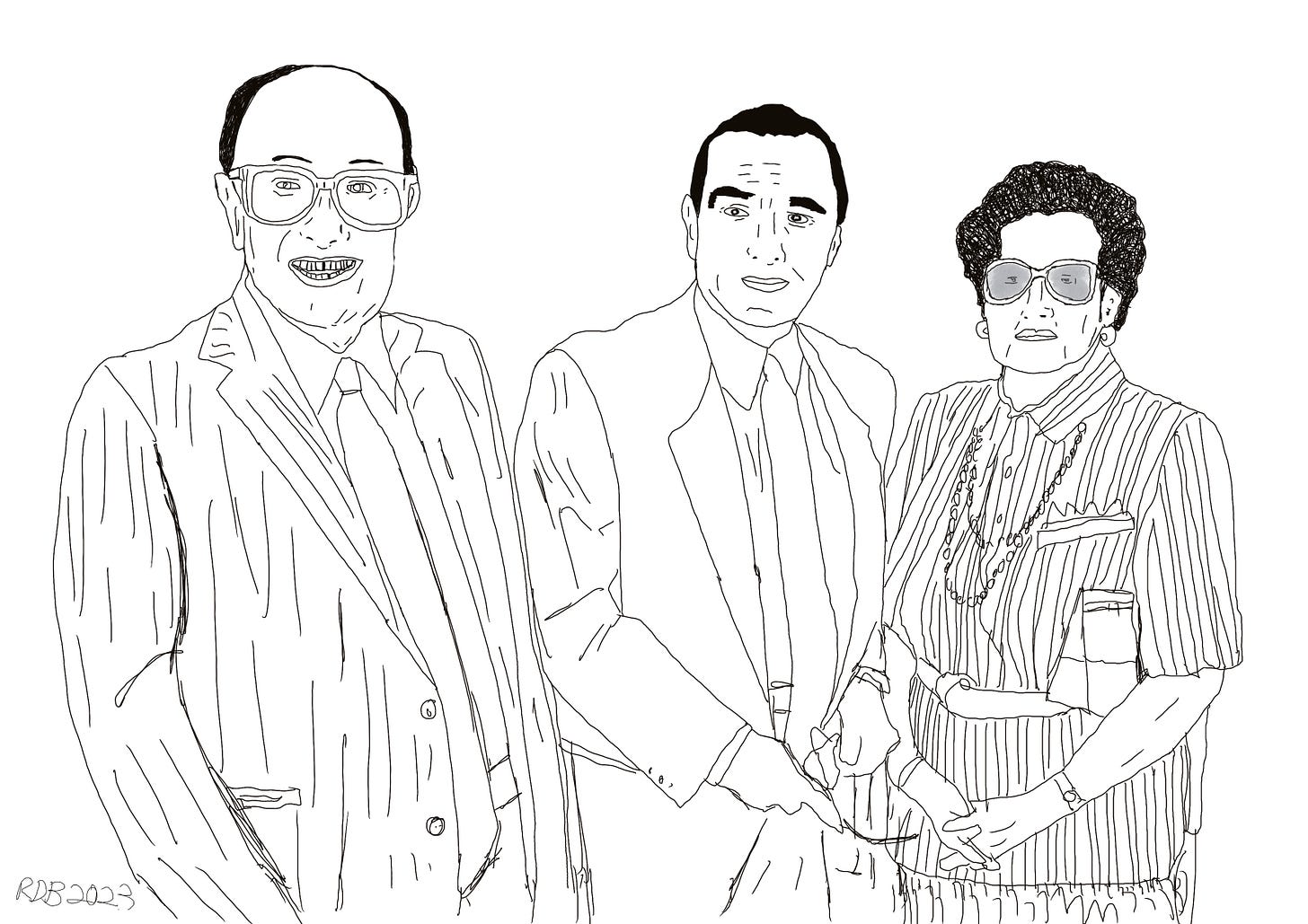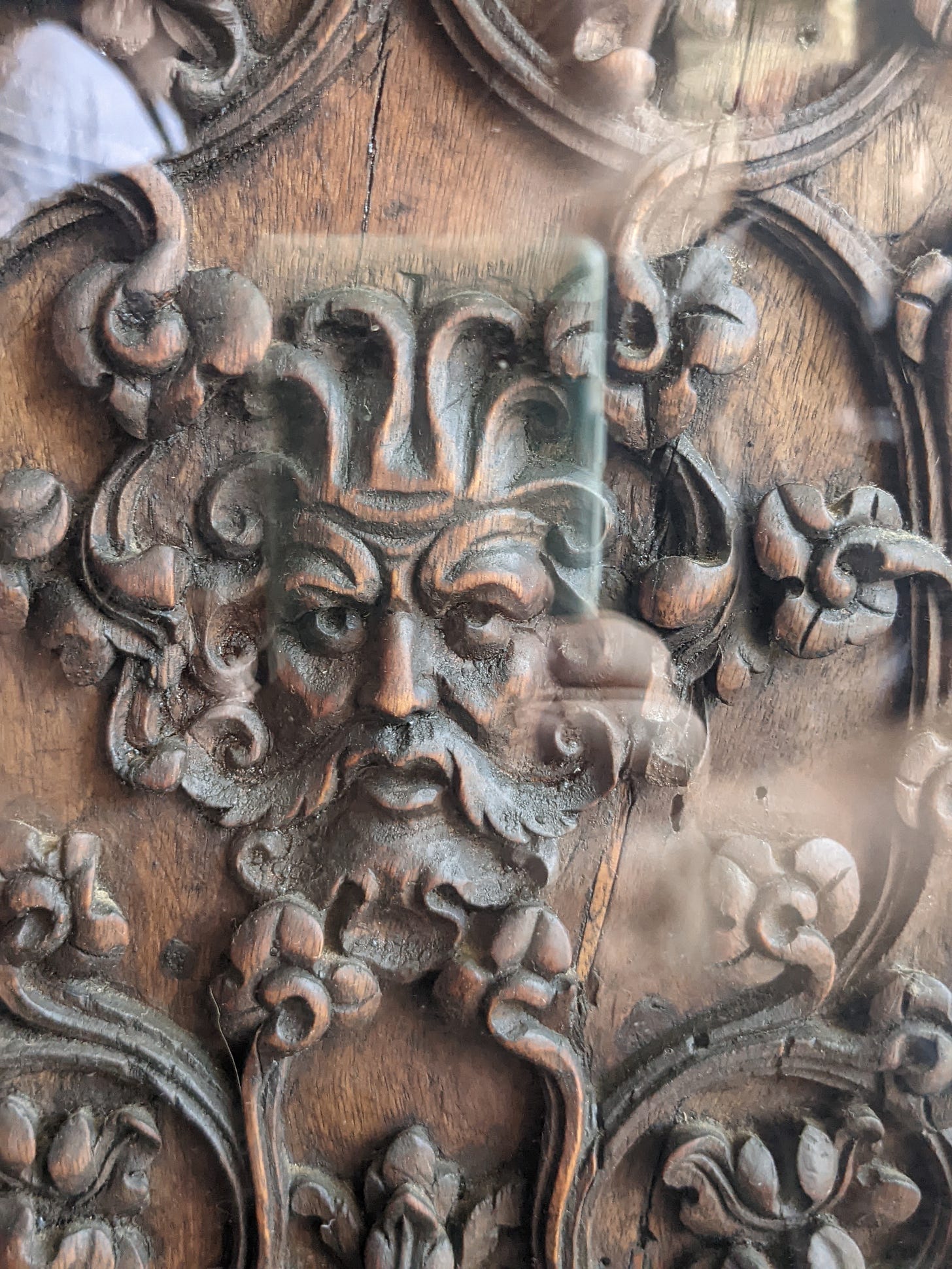#78 Superstitions, folktales and incantations from Sicily
Hello Friend,
After sharing some of the more unusual things I've come across through the years, celebrating many funerals, All Souls Day, and just listening to stories people have told about death, many other things came to mind about Sicily's rich source of superstitions. So, moving just a tiny step away from the end-of-life part of the spectrum, I thought I'd share some ancient beliefs and stories that seem so deeply into the Italian psyche.
I recently watched Martin Scorsese's 1974 documentary Italo-American, where he interviewed his parents about their lives as second-generation Italian Americans living in New York. Apart from being a loving portrait of his parents, their personal stories highlighted the epic story of their family's journey to America, how they shaped the country, and the intimate connection the Italian migrant has with Italy.
Scorsese's mother, Catherine, was very much the star of the documentary; she had a real natural flair for storytelling, and she said something very poignant about Sicily. After retelling an old story about a strange supernatural-like encounter, she mentions how rich Italy is with fantastic, creative, unbelievable stories. And this is very true.
In a land filled with mythology that is recalled with the same vibrance and importance as history, where monsters, ghosts, strange creatures, magic, treasures, and traumatic, violent events coexist, it is easy to confuse the realm of reality with imagination.
No wonder Scorsese went on to become one of the best cinematographic storytellers ever; his family came from Sicily and were brought up listening to tales from The Odyssey, the Iliad, and the Aeneid, together with stories of bandits, monsters, demons and maidens. Hearing, telling, retelling and reinterpreting stories orally from one generation to the next creates the best narratives to be filtered and reinvented through each new generation.
The unofficial religion of Sicily is superstition and folk wisdom. Under the surface of established religion in Sicily, there is an ancient faith which has existed for longer than Catholicism and still thrives in the popular beliefs of the island. Before the Catholic Church gradually came to Trincaria, many practices, as old as Sicily itself, were passed down through time—everything from folk medicine and nature worship to a belief in the evil eye. Sicily is a rich source for lovers of the esoteric.
Polytheism, or worship of multiple deities, gradually became a dedication to patron saints. Pantheism, the belief all reality is associated with a divinity or that everything reflects an all-empowering immanent god, soon became part of catholic theology.
Worship of nature and the natural world was an integral part of agricultural-based societies for many centuries, and its symbols are still with us today. The Green Man, a deity representing the natural world, dates back to the fourth century and is found in many churches.
The face of the spritely green man is depicted with flowing hair, a bushy beard, and pointy ears made from or intertwined with leaves and foliage. This woodland spirit is found on the tomb of Sainte Are in the Church of Hilaire le Grand in France. Sainte Are means Saint Tree and is an early Christian adaptation of the nature-worshipping traditions already so common in Europe and Sicily.
The iconography of the green man is subtly weaved through many churches in Sicily, carved over doorways or hidden within elaborate works of art. There are many manifestations of this natural God even today, from the ancient Greek God Pan to Dionysus or Bacchus, the God of wine, Peter Pan, Robin Hood and the Green Giant, an icon of modern advertising.
A few years ago, I read an article that said the green man, a symbol of nature is still used in modern design; some fresh produce companies feature him in their packaging. The character is embodied in folklore and mythology as a mischievous character who represents the fertility of the natural world.
Think like Shakespeare's Puck or Oberon, leprechauns or Pan from Greek mythology. The exciting thing is that most churches use the image of the green man in their embellishments; it served as a subtle symbol to the early Christians of their pagan beliefs—a nature symbol whose worship was thought to assure the fertility of the agriculture-based society.
I found the Green Man at the base of the front entrance of my local parish church of San Michele Arcangelo at Sinagra. He's welcoming people in and reminding them of his presence, even though most people have forgotten about him today.
Now, I actively seek him out in every Church I go to, and I inevitably find traces of him, whether it be some fertile vines integrated into the stonework, a cheeky little face carved into a front door or some other kind of reference to the natural world. There is always something to indicate a connection to the fertile natural world. I even found the green man in a carving on the front door of Palermo's Cathedral.
Along with nature worship, the following of the lunar calendar is also closely associated with the natural world's reproductive cycle. Sicilian traditions follow the moon to know when to plant crops, when animals will give birth, and when pregnant women will begin labour.
Growing up with my Sicilian grandparents, I absorbed the stories from their island. My Nonni's childhood was filled with a large, loosely hanging web of family, friends and community, which seemed so intimately connected that each person knew everything about everybody else. They all shared their stories in a collective mixture of wisdom and gossip. In the small countryside hamlet where my grandparents grew up, in the province of Messina, there were no secrets; all scandals were played out on a very public stage.
Apart from the vivid Sicilian characters my grandparents spoke of, another more intriguing protagonist cast a spell over me. The otherworldliness of the Sicily of their tales was a mixture of mythology, history and magic. My grandparents spoke of ghosts, evil, violence, sadness, madness, the devil, saints, witchcraft, monsters and folklore as truthful and genuine experiences.
I thought the tangibility of the esoteric was something my grandparents had created with their subjective memories, idealising their homeland and childhood.
Years later, when I moved to Sicily, I began to understand how, even today, Sicilians talk of their mythology as if it is history. There is a strong foundation of belief in ancient lore, which considers the devil and God as part of an eternal struggle between good and evil in a battle for the human Soul.
The most intriguing manifestation of these alternative beliefs is the literature of the Sicilian incantations. Hundreds of superstitions sustain that supernatural powers can harm and, in turn, be used to defend from evil.
The Sicilian scongiuri, in particular, are short prayers to certain saints seeking to alleviate illness and suffering when the cause is malevolent. The evil eye originates in Middle Eastern culture, but the belief in the green-eyed monster of jealousy, jinxing yourself or others, is a superstition dispersed worldwide.
In Sicily, the evil eye can cause everything from migraines to stomach aches, allergies or mastitis. Hence, there are endless incantations to help unfortunate victims. There are prayers for everything from illness to bad weather, dangerous animals, nightmares and bad relationships.
The incantations, which help with matters of the heart, evoke the assistance of an array of heavenly angels, including archangels, cherubs and seraphim, the highest in the Christian angelic hierarchy. Those suffering from a particular illness will plead for the intervention of a specific saint. For example, if a problem is associated with the eyes or vision, Saint Lucy will be named the patron saint of sight.
Other scongiuri are folktales that counteract the evil eye, like the fable of the kind-hearted husband and wicked wife:
One night, during a terrible storm, a husband and wife hear a knock on their door from a stranger seeking refuge. The husband welcomes the stranger into his house and tells his wife to prepare a meal. The wife, who is mean-hearted and doesn't want any guests in her house, prepares a disgusting chicken broth, not even bothering to pluck the chicken. Then the husband asks his wife to prepare their guest a bed for the night, so she piles some corn husks in the corner, with an old sack as a blanket.
During the night, all of the bad karma the wife has dished out to the guest comes back to her as a violent stomach ache. The wife, yelling out in pain, wakes up the stranger, who asks the husband what the matter is. The man tells the husband to repeat a chant which retells the story of that evening, ending with a Lord's prayer and the sign of the cross.
The following day, the wife is cured of her pain, while the foreigner has disappeared, leaving behind a crucifix in his makeshift bed, making the husband and wife believe that God had visited them. In its retelling, this fable within a fable acts as an incantation to keep away bad karma.
Apart from physical illness, the evil eye is also associated with bad luck; endless other prayers are used to counteract this. Strangely enough, these simple chants against evil only work if they are learnt by heart and repeated at midnight on Christmas.
The esoteric is closely linked to religion in Sicily; the pagan has subtly been absorbed into the Catholic, leaving behind colourful pieces of prayer, poetry and folktales evocative of the Sicilian voice.
Here's to exploring more of the complex nature of Sicily with you.
Your friend
Rochelle








